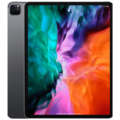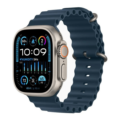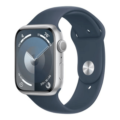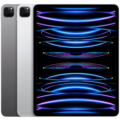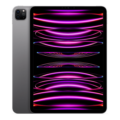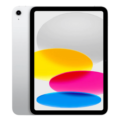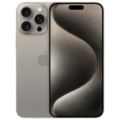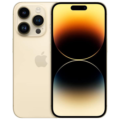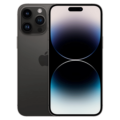- Home
- Apple Devices
- Apple iPad
- Apple iPad Pro 12.9 (2015) full specifications
Apple iPad Pro 12.9 (2015) full specifications
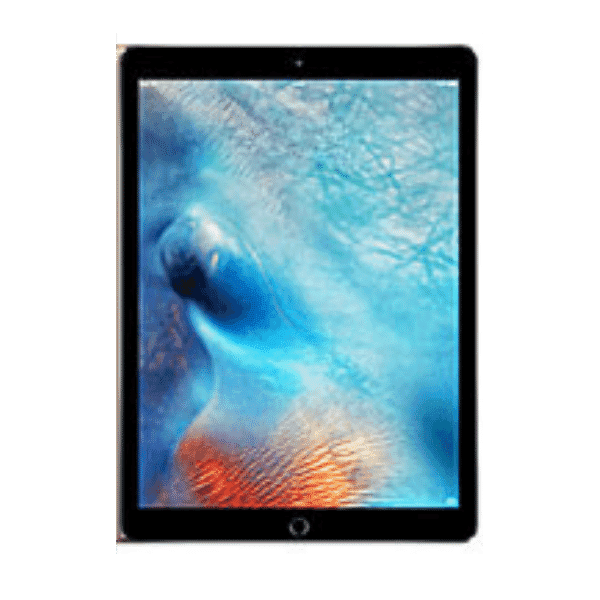
SPECIFICATIONS
General
| Status | Discontinued |
| Announced | 2015, September |
| Released | 30 November, 2025 |
| Model |
A1584, A1652, iPad6,7, iPad6,8 |
| Price Apple iPhone Price in USA, UK, Canada, Australia, India, Pakistan, China, Japan and Europe |
EUR 850 USD 926 |
Network
| Technology |
GSM / CDMA / HSPA / EVDO / LTE |
| 2G Network | GSM 850 / 900 / 1800 / 1900 CDMA 800 / 1900 |
| 3G Network | HSDPA 850 / 900 / 1700 / 1900 / 2100 CDMA2000 1xEV-DO |
| 4G Network |
1, 2, 3, 4, 5, 7, 8, 13, 17, 18, 19, 20, 25, 26, 28, 29, 38, 39, 40, 41 |
| Speed | HSPA 42.2/5.76 Mbps, LTE-A Cat4 150/50 Mbps, EV-DO Rev.A 3.1 Mbps |
| GPRS GPRS (General Packet Radio Service) is a packet oriented mobile data service on the 2G and 3G cellular communication system's global system for mobile communications (GSM), Generally, GPRS is used for the purpose of wireless data transfer, such as sharing pictures and videos or browsing the Internet via a mobile phone connection. | |
| EDGE EDGE (Enhanced Data GSM Environment) is a wireless network technology generally considered the next step in the 2G network offers data transfer rates up to four times faster than ordinary GSM networks, Generally, EDGE is used for the purpose of wireless data transfer, such as sharing pictures and videos or browsing the Internet via a mobile phone connection. |
Body
| Dimensions | 305.7 x 220.6 x 6.9 mm (12.04 x 8.69 x 0.27 in) |
| Weight | 713 g (Wi-Fi) / 723 g (LTE) (1.57 lb) |
| Colors |
Space Gray, Silver, Gold |
| SIM SIM (Subscriber Identity Module) is a small card that contains mobile network subscriber's account information. This allows the phone using the card to attach to a mobile network. The SIM card is most commonly associated with GSM and UMTS mobile networks. Moving a SIM card from one phone to another allows a subscriber to switch mobile phones without having to contact their mobile network carrier. SIM cards can also be used by a phone to store limited amounts of data, such as phone numbers and text messages. | Nano-SIM and eSIM |
Display
| Display Type Display Technology => A number of display technologies and types used in mobile phones => TFT (Thin Film Transistor), IPS (In-Place Switching), OLED (Organic Light Emitting Diode), AMOLED (Active-Matrix Organic Light-Emitting Diode), Super AMOLED (an even advanced version of AMOLED), Resistive Touchscreen (Resistive touchscreens contain two layer of conductive material with a very small gap between them which acts as a resistance), Capacitive Touchsceen (Capacitive touchscreen technology consists of a layer of glass coated with a transparent conductor) | IPS LCD |
| Size | 12.9 inches, 519.2 cm2 (~77.0% screen-to-body ratio) |
| Resolution | 2048 x 2732 pixels, 4:3 ratio |
| Pixel Density Pixel Density (PPI) is refers to the concentration of pixels on a particular display, measured in pixels per inch (ppi). Pixel density is calculated by dividing the diagonal pixel resolution of a display by its diagonal size, higher pixel density better display quality. | (~264 ppi density) |
| Touch Screen | Haptic Touch |
| Display Protection Display Protection => Gorilla Glass is a special alkali-aluminosilicate glass shield with exceptional damage resistance that helps protect mobile displays from scratches, drops, and bumps of everyday use, It is always better to go for a smartphone with Gorilla Glass for that added protection and peace of mind. | Scratch-resistant glass, oleophobic coating |
| Multitouch |
Camera
| Primary Camera is able to capture photographs and usually videos, The most important characteristics of a camera are the resolution (measured in megapixels), lens focus type (fixed or automatic), higher megapixel cameras are known to capture higher quality photos, but not always a good measurement of the photos quality. |
8 MP, f/2.4, 31mm (standard), 1.12µm, AF |
| Video | 720p@30fps |
| Camera Features |
face detection, HDR, FaceTime over Wi-Fi or Cellular |
| Selfie Camera |
1.2 MP |
| Video | 720p@30fps |
| Camera Features |
face detection, HDR, FaceTime over Wi-Fi or Cellular |
Hardware
| Chipset Chipset is a group of integrated circuits designed to perform one or a more dedicated functions, often with real time computing constraints, Popular smartphones are equipped with more advanced embedded chipsets that can do many different tasks depending on their programming. | Apple A9X (16 nm) |
| CPU CPU (Central Processing Unit) mostly known as processors, CPU processes instructions in order to carry out certain functions that make your device operate properly. Processors are often described as the brain of computers, smartphones and tablets, Smartphones and tablets rely on processors to carry out their every task, Processors are an incredibly important factor in selecting any type of computing device, including your smartphone. | Dual-core 2.26 GHz (Twister) |
| GPU GPU (Graphics Processing Unit) is a single-chip processor designed to rapidly manipulate and alter memory to accelerate the creation of images in a frame buffer intended for output to a display, This includes things such as lighting effects, object transformations, and 3D motion. | PowerVR Series 7 (12-core graphics) |
| RAM (Memory) RAM (Random Access Memory) is a type of computer memory that can be accessed randomly, any byte of memory can be accessed without touching the preceding bytes that allows information to be stored and accessed quickly from random locations. RAM is the most common type of memory found in computer systems, smartphones, tablets and other electronic devices. | 4 GB |
| Internal Storage Internal Storage is a data storage space (flash memory) mostly used in smartphones, tablets and other electronic devices where operating system, apps, music, photos, videos, files and other user data Is stored. | 32GB/128GB/256GB |
| Card Slot Memory Card Slot is a special slot for inserting a memory card. Memory cards allow you to expand the phone's built-in memory, A memory card (sometimes called a flash memory card or a storage card) is a small storage medium used to store data such as text, pictures, audio, and video, for use on small, portable or remote computing devices such as mobile phones, mp3 players, digital cameras. | No |
| Sensors Sensors are electronic components that detects and responds to some type of input from the physical environment. The specific input could be light, heat, motion, moisture, pressure and location, The output is generally a signal that is converted to use in computing systems, a location sensor, such as a GPS receiver is able to detect current location of your electronic device. |
Fingerprint (front-mounted), accelerometer, gyro, compass, barometer |
Software
| Operating System OS => Every computer system run on a base software called Operating System (OS). Operating System controls all basic operations of the computer (such as smartphone, PDAs, tablet computers and other handheld devices). The Operating System allows the user to install and run third party applications (apps), apps are used to add new functionality to the device. | iOS 9, upgradable to iPadOS 16.7.5 |
| Browser (Default) | Safari |
Media
| Loudspeaker | Yes, with stereo speakers (4 speakers) |
| 3.5mm Jack | |
| FM Radio | No |
Connectivity
| Bluetooth Bluetooth is a wireless communications technology for exchanging data between mobile phones, headsets, computers and other network devices over short distances without wires, Bluetooth technology was primarily designed to support simple wireless networking of personal consumer devices. | 4.0, A2DP, EDR |
| Infrared Infrared connectivity is an old wireless technology used to connect two electronic devices. It uses a beam of infrared light to transmit information and so requires direct line of sight and operates only at close range. | |
| Wi-fi Wi-Fi is a popular wireless networking technology using radio waves to provide high-speed network connections that allows devices to communicate without cords or cables, Wi-Fi is increasingly becoming the preferred mode of internet connectivity all over the world. | Wi-Fi 802.11 a/b/g/n/ac, dual-band, hotspot |
| Wi-fi Hotspot | |
| USB | Lightning, USB 3.0; magnetic connector |
| NFC NFC (Near field communication) is a set of standards for smartphones and similar devices to establish peer-to-peer radio communications with each other by touching them together or bringing them into proximity, usually no more than a few inches. |
Battery
| Battery Type Battery Type => Cell phones run on various kinds of batteries depending on the manufacturer, phone size or shape and features. There are basically four types of cell phone batteries => Lithium Polymer, Lithium Ion, Nickel Metal Hydride and Nickel Cadmium. | Li-Po |
| Capacity Battery Capacity is a measure (typically in Amp-hr) of the charge stored by the battery, and is determined by the mass of active material contained in the battery. The battery capacity represents the maximum amount of energy that can be extracted from the battery under certain conditions. | 10,307 mAh |
| Placement | Non-removable |
| Talk Time Talk Time is the longest time that a single battery charge will last when you are constantly talking on the phone under perfect conditions, Ambient temperature and highly dependent on the cellular network environment such as the distance to the closest cell network tower. | Up to 10 h (multimedia) |
MISC
Description
Released in November 2015, the Apple iPad Pro 12.9-inch (2015) made a significant mark in the tablet market with its impressive specifications, powerful performance, and exceptional display. With its large screen size, cutting-edge hardware, and new features, it became a game-changer in Apple’s tablet lineup. In this review, we’ll break down its full specifications to provide you with a thorough understanding of the device.
Table of Contents
Design and Build Quality

The iPad Pro 12.9 (2015) features a sleek, premium design. It measures 305.7 x 220.6 x 6.9 mm and weighs 713 grams for the Wi-Fi version and 723 grams for the LTE model. This weight, while heavier than typical tablets, is balanced by the large 12.9-inch screen that offers a lot of real estate for various tasks. The iPad Pro’s aluminum body is both durable and lightweight, providing a premium feel. The device is available in three colors: Space Gray, Silver, and Gold, giving users plenty of choices to match their style.
The iPad Pro 12.9 supports a Nano-SIM and eSIM, ensuring connectivity options for both Wi-Fi and cellular models. It also comes with a magnetic connector for accessories like the Smart Keyboard and Apple Pencil, which adds to its versatility as a productivity tool.
Display: A Stunning Visual Experience
The 12.9-inch IPS LCD is one of the standout features of the iPad Pro 12.9 (2015). The screen boasts a resolution of 2048 x 2732 pixels, delivering sharp and vibrant visuals. With a 4:3 aspect ratio and about 264 pixels per inch (ppi) density, this large display ensures excellent clarity whether you are working, watching movies, or playing games.
It’s also equipped with scratch-resistant glass and an oleophobic coating, which keeps the screen protected from fingerprints and smudges. The display offers an immersive viewing experience with a 77% screen-to-body ratio, allowing users to enjoy content without excessive bezels.
Performance: Apple A9X Chipset and 4GB RAM
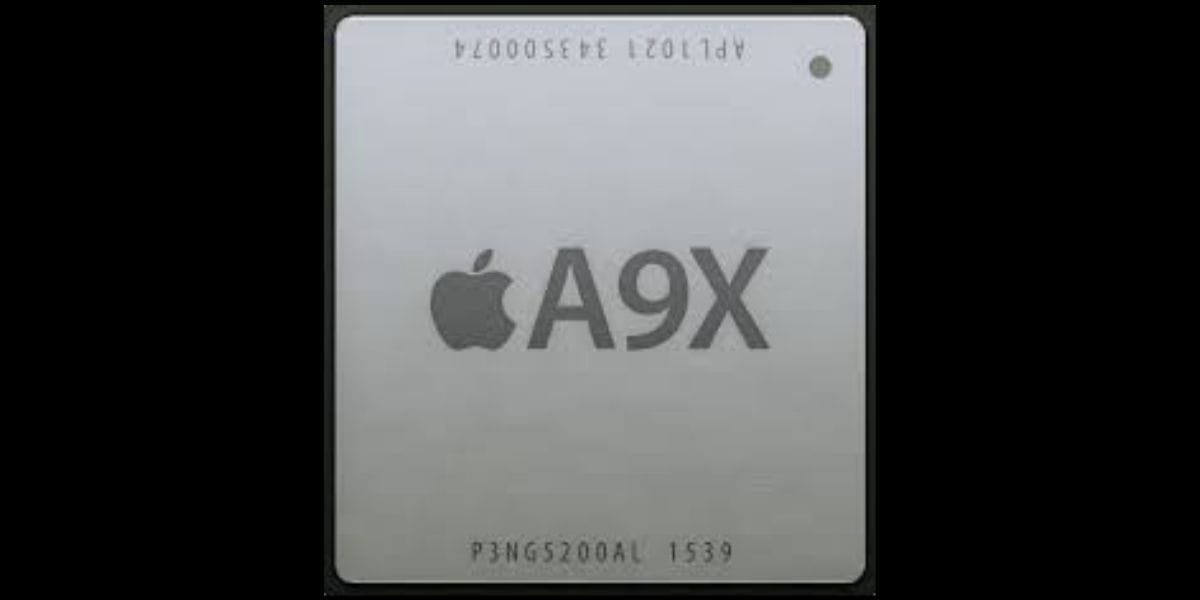
The iPad Pro 12.9 (2015) is powered by the Apple A9X chip, which is a significant upgrade over previous models. Built on a 16nm process, the A9X features a dual-core 2.26 GHz (Twister) CPU and a PowerVR Series 7 12-core GPU, providing a substantial performance boost for handling demanding apps and multitasking with ease.
The device comes with three storage variants: 32GB, 128GB, and 256GB. All versions are paired with 4GB of RAM, ensuring smooth performance for both light and heavy applications. While the iPad Pro does not support expandable storage via microSD cards, the internal storage offers ample space for apps, documents, photos, and videos.
Camera: 8MP Rear Camera and 1.2MP Front Camera
The iPad Pro 12.9 (2015) features an 8MP rear camera with an aperture of f/2.4 and autofocus. The camera supports HDR and can record 1080p videos at 30fps. For users who enjoy video recording or capturing high-quality images, the iPad Pro provides reliable results in well-lit environments.
On the front, there’s a 1.2MP camera, suitable for FaceTime calls and selfies. The front camera supports Face Detection and HDR, making it a decent option for video chats, though it’s not designed for professional-grade photography.
Battery Life and Charging
The iPad Pro 12.9 (2015) is equipped with a 10,307mAh battery that offers impressive longevity. Apple claims up to 10 hours of multimedia usage, such as browsing the internet and watching videos. For those who are constantly on the move, the long battery life makes the iPad Pro a reliable companion for work and play.
It also features a Lightning port for charging and data transfer, along with support for USB 3.0. The device charges relatively quickly, ensuring you can get back to using it without long waits.
Software: iOS 9 to iPad 16.7.7

At launch, the iPad Pro 12.9 (2015) came with iOS 9, which has since been upgraded to the latest iPadOS 16.7.7. Over the years, Apple has kept the device up to date with important software enhancements, although it won’t receive the latest updates forever. This tablet can still run most apps and software updates, ensuring you get a solid user experience.
Sound and Audio
The iPad Pro 12.9 is equipped with four stereo speakers, delivering rich, high-quality sound for media consumption. Whether you’re watching movies, listening to music, or making video calls, the sound experience is clear and immersive. Additionally, the device includes a 3.5mm headphone jack, allowing you to connect wired headphones for a more personalized listening experience.
Connectivity and Features
The iPad Pro 12.9 (2015) supports various connectivity options, such as Wi-Fi 802.11 a/b/g/n/ac and Bluetooth 4.0. It also includes GPS functionality on the LTE model, along with NFC for added convenience. FaceTime over Wi-Fi or cellular is supported for video calls, offering seamless communication options. The front-mounted fingerprint recognition adds extra security, ensuring user privacy and safety.
Accelerometer, gyro, compass, and barometer sensors enhance the user experience with precise positioning and motion sensing features. These sensors improve navigation, tracking, and interaction with apps, providing a more intuitive experience.
Conclusion: A Powerful Tablet for Its Time
While the iPad Pro 12.9 (2015) is no longer the latest, it still performs admirably for most tasks. Its large screen, A9X chip, and solid camera setup make it a strong device. Although it’s discontinued and may lose support for future updates, it remains useful for many applications.
The iPad Pro 12.9 (2015) still holds up well in performance and display, even compared to newer models. For those looking for an affordable, used, or refurbished option, it is still a viable choice. It’s perfect for productivity, entertainment, and creative work with its powerful capabilities.



